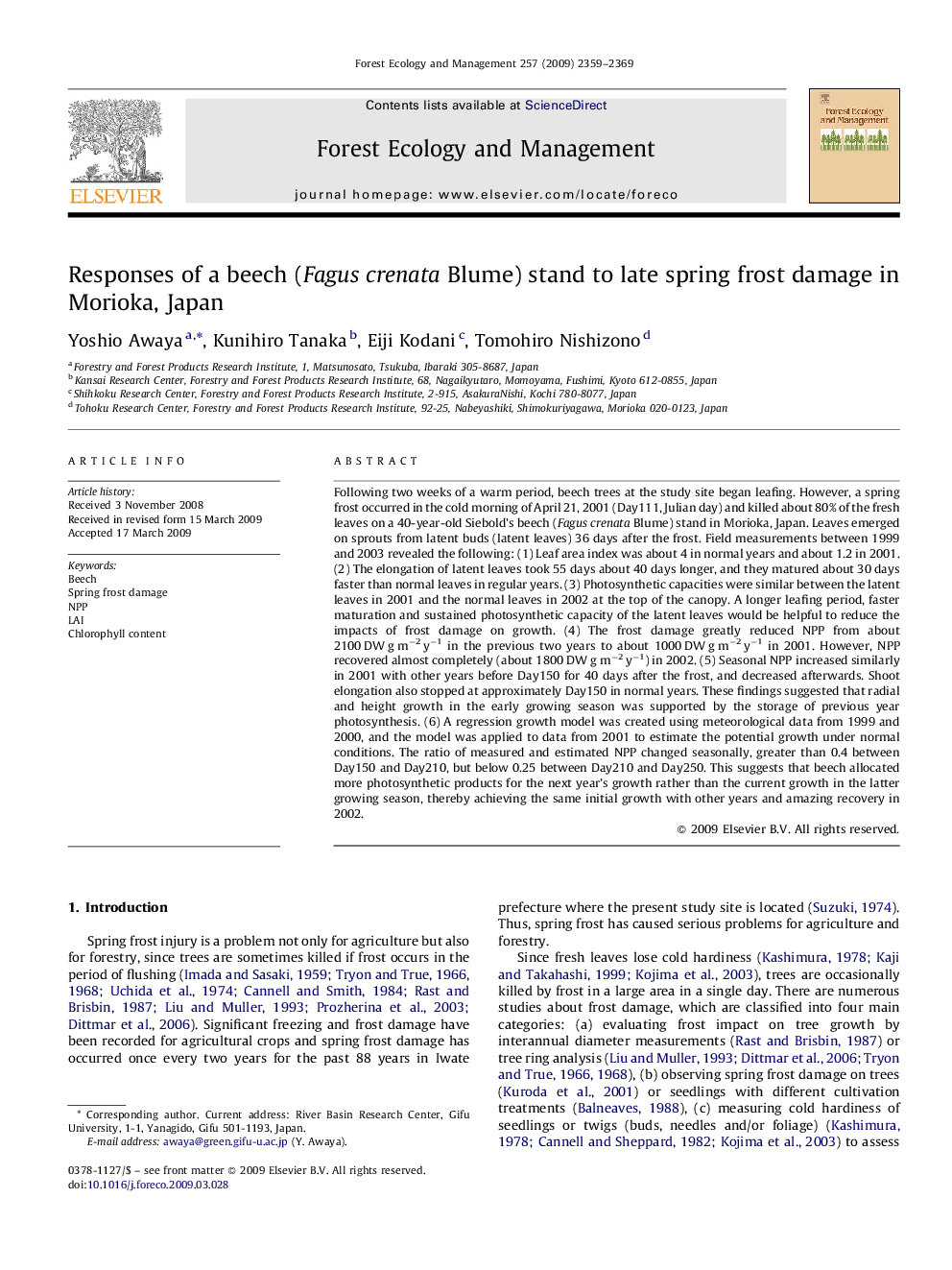| کد مقاله | کد نشریه | سال انتشار | مقاله انگلیسی | نسخه تمام متن |
|---|---|---|---|---|
| 88586 | 159309 | 2009 | 11 صفحه PDF | دانلود رایگان |

Following two weeks of a warm period, beech trees at the study site began leafing. However, a spring frost occurred in the cold morning of April 21, 2001 (Day111, Julian day) and killed about 80% of the fresh leaves on a 40-year-old Siebold's beech (Fagus crenata Blume) stand in Morioka, Japan. Leaves emerged on sprouts from latent buds (latent leaves) 36 days after the frost. Field measurements between 1999 and 2003 revealed the following: (1) Leaf area index was about 4 in normal years and about 1.2 in 2001. (2) The elongation of latent leaves took 55 days about 40 days longer, and they matured about 30 days faster than normal leaves in regular years. (3) Photosynthetic capacities were similar between the latent leaves in 2001 and the normal leaves in 2002 at the top of the canopy. A longer leafing period, faster maturation and sustained photosynthetic capacity of the latent leaves would be helpful to reduce the impacts of frost damage on growth. (4) The frost damage greatly reduced NPP from about 2100 DW g m−2 y−1 in the previous two years to about 1000 DW g m−2 y−1 in 2001. However, NPP recovered almost completely (about 1800 DW g m−2 y−1) in 2002. (5) Seasonal NPP increased similarly in 2001 with other years before Day150 for 40 days after the frost, and decreased afterwards. Shoot elongation also stopped at approximately Day150 in normal years. These findings suggested that radial and height growth in the early growing season was supported by the storage of previous year photosynthesis. (6) A regression growth model was created using meteorological data from 1999 and 2000, and the model was applied to data from 2001 to estimate the potential growth under normal conditions. The ratio of measured and estimated NPP changed seasonally, greater than 0.4 between Day150 and Day210, but below 0.25 between Day210 and Day250. This suggests that beech allocated more photosynthetic products for the next year's growth rather than the current growth in the latter growing season, thereby achieving the same initial growth with other years and amazing recovery in 2002.
Journal: Forest Ecology and Management - Volume 257, Issue 12, 22 May 2009, Pages 2359–2369